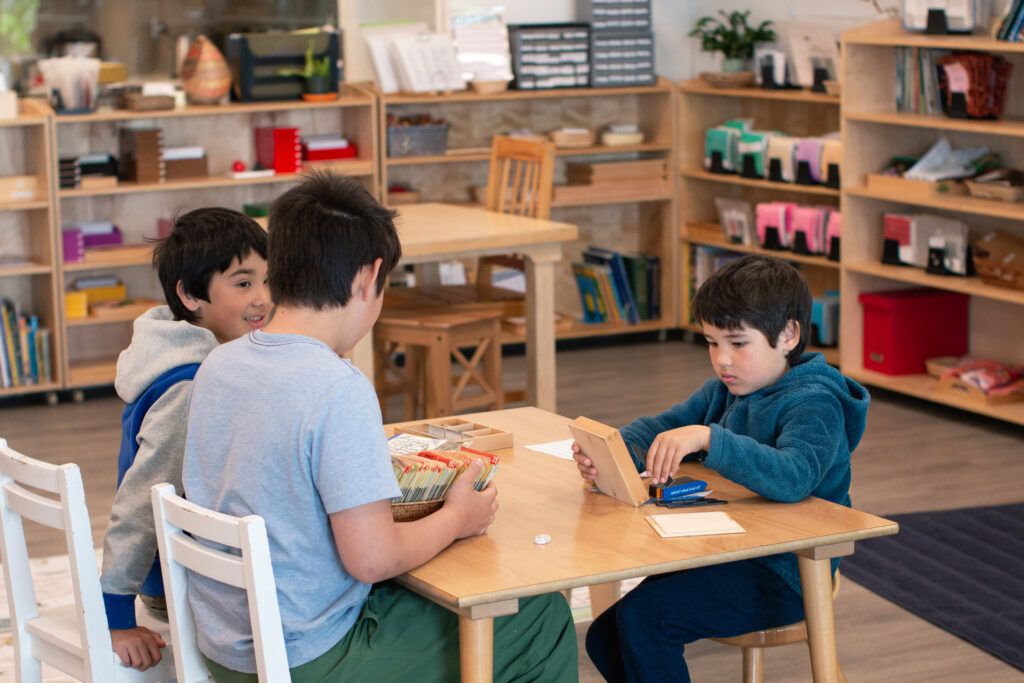Montessori learning is vastly different from traditional learning. It’s a system without grading and the teacher isn’t even the true head of the classroom. And, as one might expect, the classroom is altered to reflect this free learning style.
A Montessori classroom is minimalist, highly organized, and has plenty of open space for children to work on separate activities. There are as few distractions as possible to help kids focus on one task at a time. Short shelves and flexible layouts aid the learning process.
Montessori classrooms are laid out with the child’s agency in mind. Every choice made in the furniture, desk layout, and even shelving is done to offer students as much freedom in learning as possible.

What Does a Montessori Classroom Look Like?
Everyone knows what a traditional classroom layout looks like. The room is covered wall-to-wall with catchy posters, bright cartoons, and inspirational quotes. Toys and games sit just out of reach of the children, to be brought out only at certain designated playtime.
The desks all line up together, sometimes in cute groups, sometimes all separated, but the desk configuration doesn’t matter as much as the fact that they’re all facing the teacher. The teacher is in charge; after all, they’re the one doing the teaching, and even if they’re criminally underpaid, at least they get a chance to run their own classroom.
If you were to walk into a Montessori classroom in the middle of a school day, you’d find a completely different layout. There are no big posters on the walls. There aren’t toys and books littered just out of the children’s reach. And the desks aren’t all facing the front of the classroom, where a teacher would be standing. In most cases, the teacher doesn’t even have a desk of their own.
Montessori classrooms are laid out with the intent of letting the children control their own learning. Desks are replaced with small tables that are scattered around the room if a child wants to use one. They even have rugs, cushion seating, and some individual desk seating just in case a child would rather work on their own.
The plain wood shelves are short and open, so children can easily access the various activities and learning games. Once they grab an activity from the shelf, they can choose to sit on a cushion, stand at a table, or sprawl out on the floor.
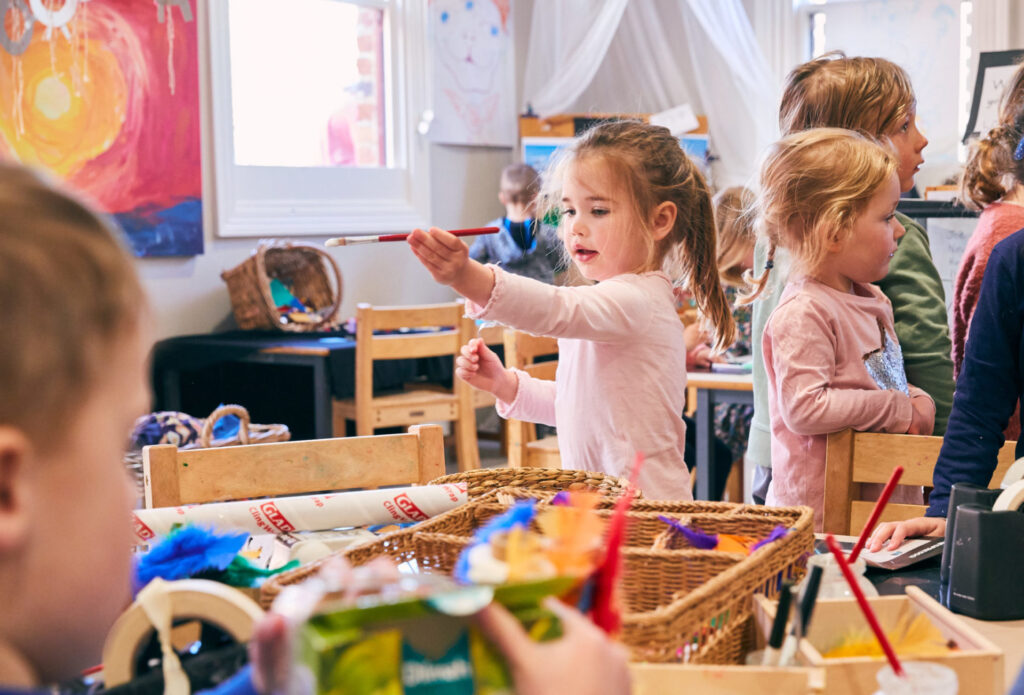
The furniture isn’t bright and colorful like other elementary school chairs or shelves. This furniture is plain and usually wood (although sometimes metal is used). If there is a color scheme, it’s usually pastel. Since one of the main tenants of the Montessori teaching style is “Order,” it makes sense that the classroom would look like this. The minimalistic interior design keeps organization simple and helps children focus on their learning activities instead of staring at posters and zoning out.
Children and teachers (called guides) wander around, all communicating and exploring new ideas together. Montessori classrooms don’t have one teacher over the class; instead, there are usually at least two adults in the classroom (sometimes three, depending on how many teaching assistants the main teacher has). That teacher would be in charge if there happened to be an emergency, but otherwise, students and teachers all work together as a class to support learning overall.
Something else you’d notice is the different ages of the children. They’re not separated into ages by one year. Montessori classes are created in multi-age groups based on developmental range. Classes have ages from 0-3, 3-6, 6-9, 9-12, 12-15, and 15-18. But we’ll discuss more why that is later on.
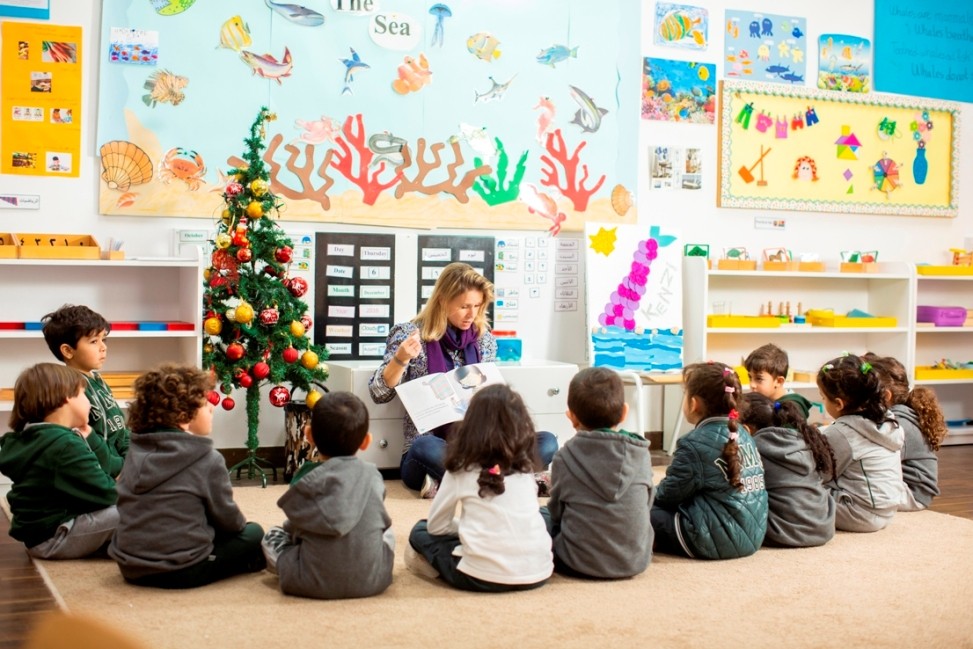
How Does a Montessori Classroom Work?
Instead of having traditional lessons and learning units, Montessori classrooms teach children with Montessori lessons and activities central to five main topics:
- Practical Life
- Math
- Language
- Sensorial
- Cultural
Practical Life activities center around skills kids should know for everyday productivity, such as cooking, cleaning, sewing, and more. The children aren’t given actual sewing needles or cooking equipment, but instead, they can have fun putting together diagrams and doing activities that mimic these experiences so they can practice without hurting themselves.
Math revolves around numbers and equations, but kids get the chance to see math in action. Instead of reading word problems about Sally and her 200 BOGO watermelons, they can use toys to count, subtract, multiply, and more.
Language activities not only help kids practice reading and writing, but they also get the chance to read out loud, match words to pictures, and even act out verb actions for themselves.
Sensorial learning isn’t a category in traditional learning, but it’s exactly what it sounds like—learning about and exploring senses. Students can organize items based on sight, sniff different samples to guess smells, and explore a variety of textures they will encounter as they grow up.
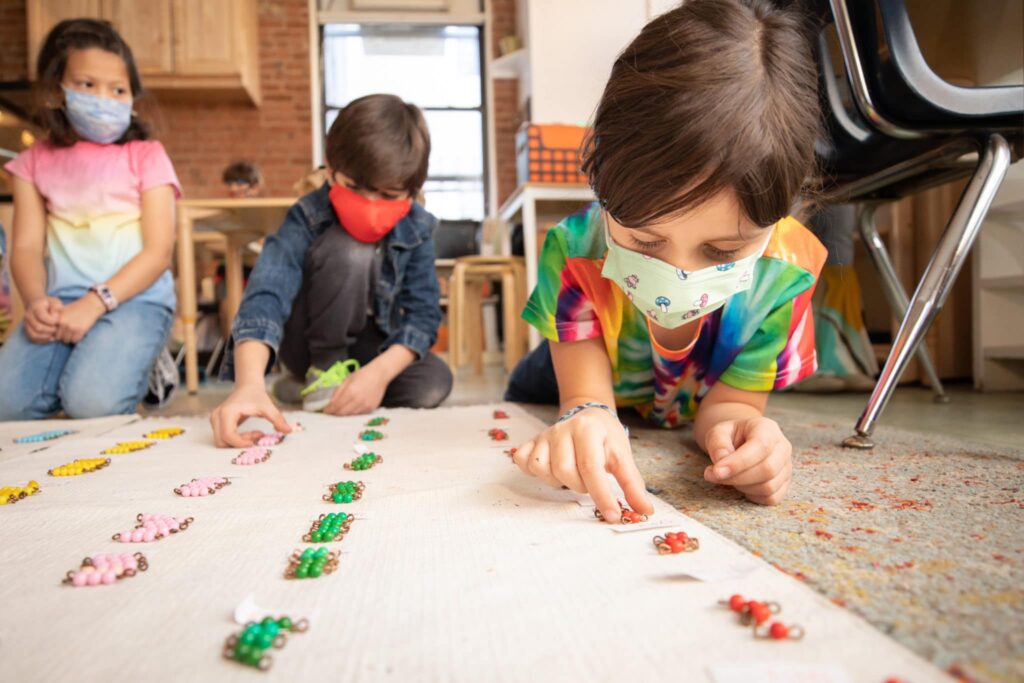
Cultural activities teach children about a myriad of cultures, including various geography, climate, languages, countries, and food across the world. Having culture as one of the main five learning categories helps young children gain more awareness and empathy with different groups of people.
The activities for each learning category are usually organized together in different sections of the classroom, so if a kid is interested in math, they can just return to the math shelf and pick out a new activity. This organization also encourages kids to clean up after themselves when they’re done. Activities are returned to their proper places instead of being scattered across the classroom haphazardly.
Thus far, you might be wondering exactly how learning is achieved. It might seem like the kids just run around, doing activities all day. They can’t actually be learning like this, can they? Well, yes, but that’s because it’s much more than just little kids running around in a free-for-all playroom all day.
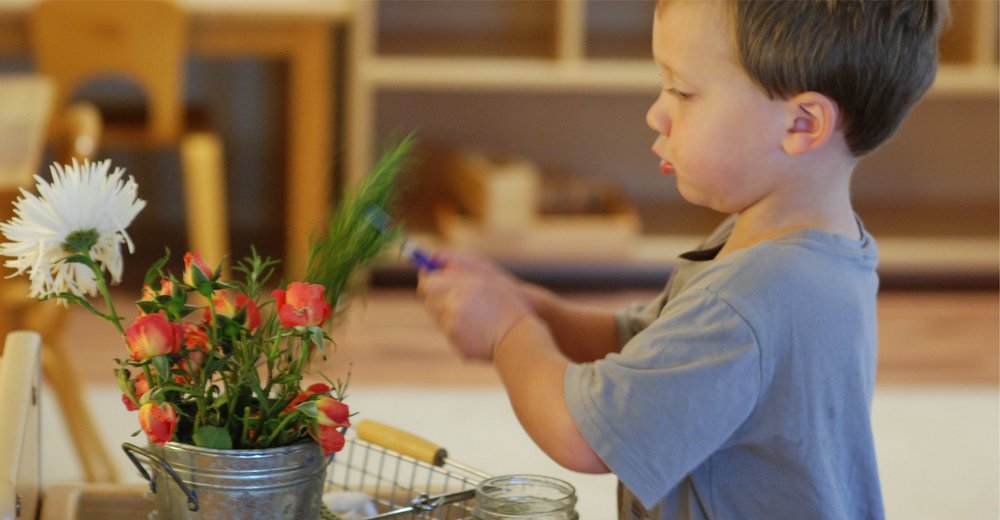
Eight Principles of Montessori Learning:
- Movement and Cognition
Learning is centered around touching, feeling, and seeing concepts with senses, instead of reading about them in a textbook. Reading information definitely works for some students, but this system can help children see how concepts work in real life, instead of just on a page. Since kids like to explore things with their hands, kinesthetic learning is emphasized highly, especially in elementary-age classes. Being able to move around freely at will and engage with concepts on a very real level stimulates learning.
2. Choice
Giving the children choices on what they can learn and when they want to learn, teaches them to make choices for themselves at a young age. Children are free to choose their favorite topics to study, and they can spend as much time on one activity as they want.
But that doesn’t mean that the classroom deteriorates into chaos. Children are encouraged to use available activities to learn, not just to do whatever they want. And if a child hasn’t spent adequate time learning about one of the categories, they are still required to do it. Their teacher will just remind them in the morning of what they need to do, and the child gets the option to work on it whenever they want to, but their agency is always paramount.
3. Interest
It goes without saying that students are more likely to be engaged in subjects they’re interested in. But this phenomenon goes deeper than you might think. Children with learning disabilities, such as dyslexia, might have horrible grades in school, but they can still memorize and read books in their own free time if they’re interested in the topic. And Montessori learning provides avenues for children to dig deeper into their favorite topics.
They will be taught everything they need to know, but they’re also given flexibility and a plethora of topics to explore, so they can start discovering their passions and skills at a young age.
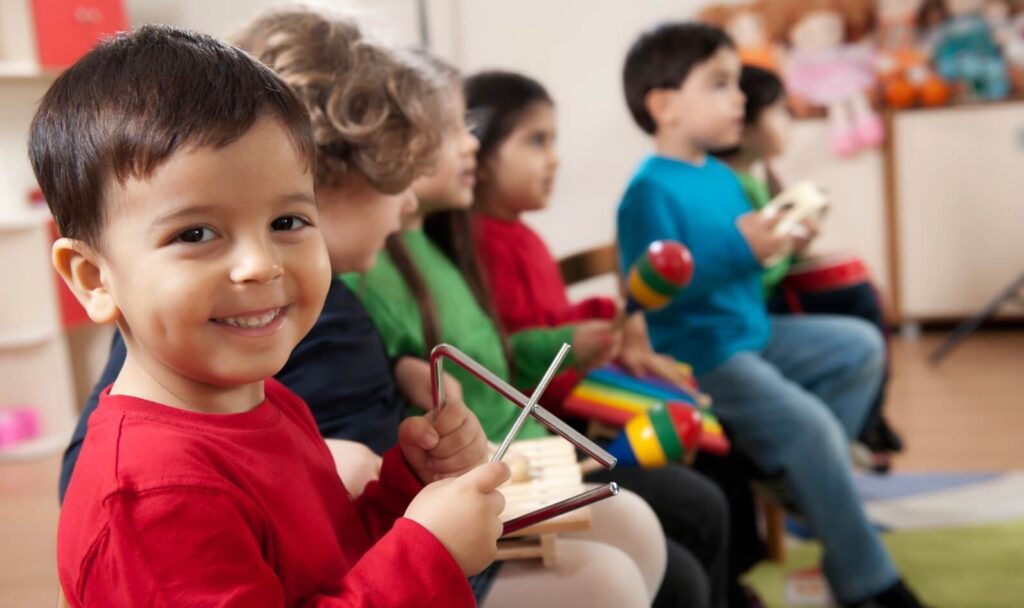
4. No Extrinsic Rewards
Extrinsic rewards are, simply put, grades. Grades run traditional school systems, so it might seem impossible to have a learning environment without them, but Montessori schools do this for a reason. They believe that extrinsic rewards, such as grades, make learning shallow. Students can sometimes focus more on their grades than what they learned to achieve a good grade. And in some cases, students memorize a ton of information for tests, only to dump that information after the unit is over.
Montessori learning instead focuses on the concepts, with no grades to make students forget the true goal of education. The goal isn’t to have a report card, spelling out “AAAAA”. The goal is to learn and grow and become better people as they work together to develop their minds.
Teachers might offer support by pointing out what a child is excelling at, but it’s never empty praise and it’s never the reason for learning. A child should continue learning because they want to, and because they’re building on what they learned before. Education shouldn’t build a tower of A’s—it should build up knowledge that kids can draw on for the rest of their lives.
5. Learning With and From Peers
We mentioned earlier how children are separated into three-year age groups. Three-year-olds and six-year-olds are in the same classroom together. That way, children aren’t taught that age is a huge barrier, and they can make connections and learn from each other no matter their age.
They also don’t feel the need to compete with other children, since they’re all different ages and at different stages in their educational journey. Instead, older kids can teach younger kids, giving the older kids the chance to teach and be a leader themselves. And siblings that are separated by age can still be in the same class together, building strong relationships that last for a lifetime.
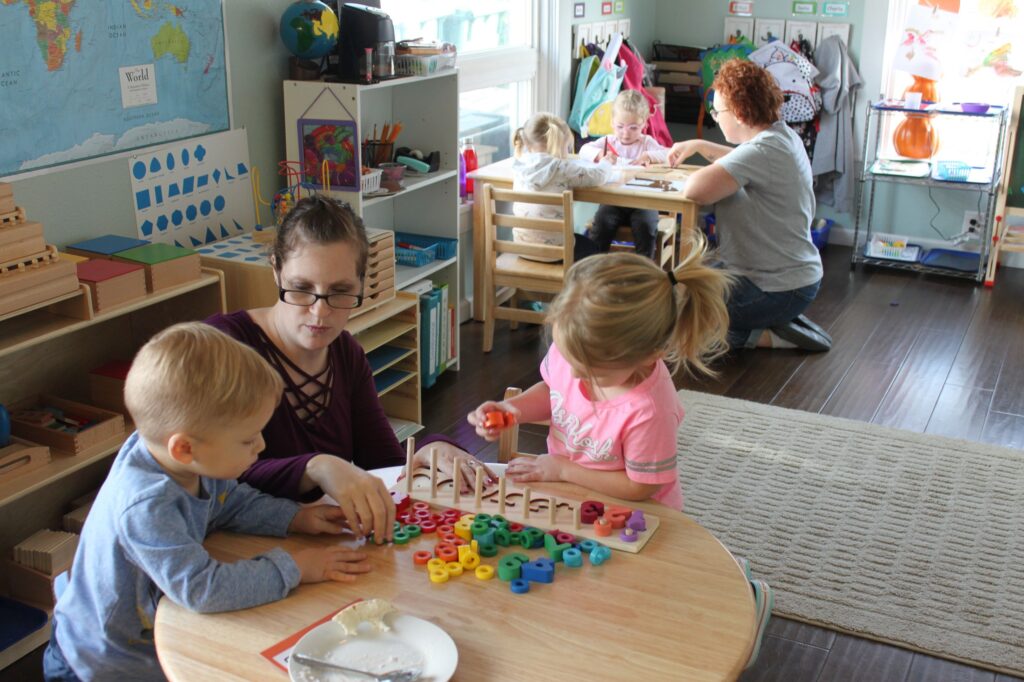
6. Learning in Context
Most students who go through the traditional education system complain how “nothing they learned will ever be useful in real life.” That isn’t a problem for Montessori students, who are taught concepts and ideas in ways that all connect back to their daily life and their future.
Concepts are taught in context, so instead of just memorizing names and types of viruses, students might learn about viruses that have affected the world, how to protect themselves from getting sick, and what to do if they do get sick. They are taught to be active participants in society, not academics who have incredible intelligence but little to no common sense.
7. Supportive Guidance
The teacher is more of a guide; they aid children in a quest for knowledge. Montessori certified teachers are trained to take a hands-off approach to teaching. They’re meant to let the students learn as much as possible, and micromanaging students can stifle learning. They will intervene if they feel it necessary to prevent conflict or anger, but otherwise, they take a step back. This also teaches students how to ask for help.
Teachers won’t interrupt, so if kids need help, they must communicate that themselves. And, since the children stick with the same teacher for three years, they’ll grow comfortable and learn to trust adults.
8. Order in Environment and Mind
The organization of the minimalist classroom encourages mental serenity as well. Kids don’t run around like maniacs (like in Toy Story 3‘s “Caterpillar” room). Instead, they’re given clear learning goals and the ability to execute those goals themselves, so the classrooms are often quiet, full of focused students. Someone can’t learn if they can’t focus, hence why the interior design and teaching plan is so simple. Kids know what to expect, so instead of being hyper off anxiety or confusion, they can sit right down every morning and get to work.
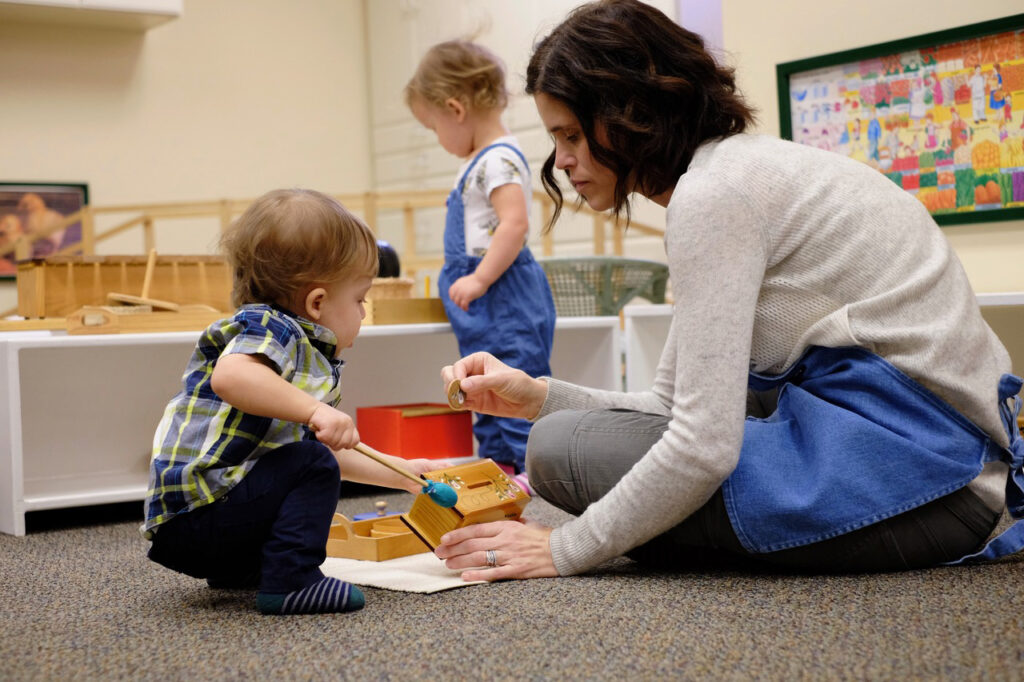
Benefits of Montessori Learning
The first Montessori school opened in 1907 by Dr. Maria Montessori herself. And today, there are over 20,000 Montessori schools worldwide.

